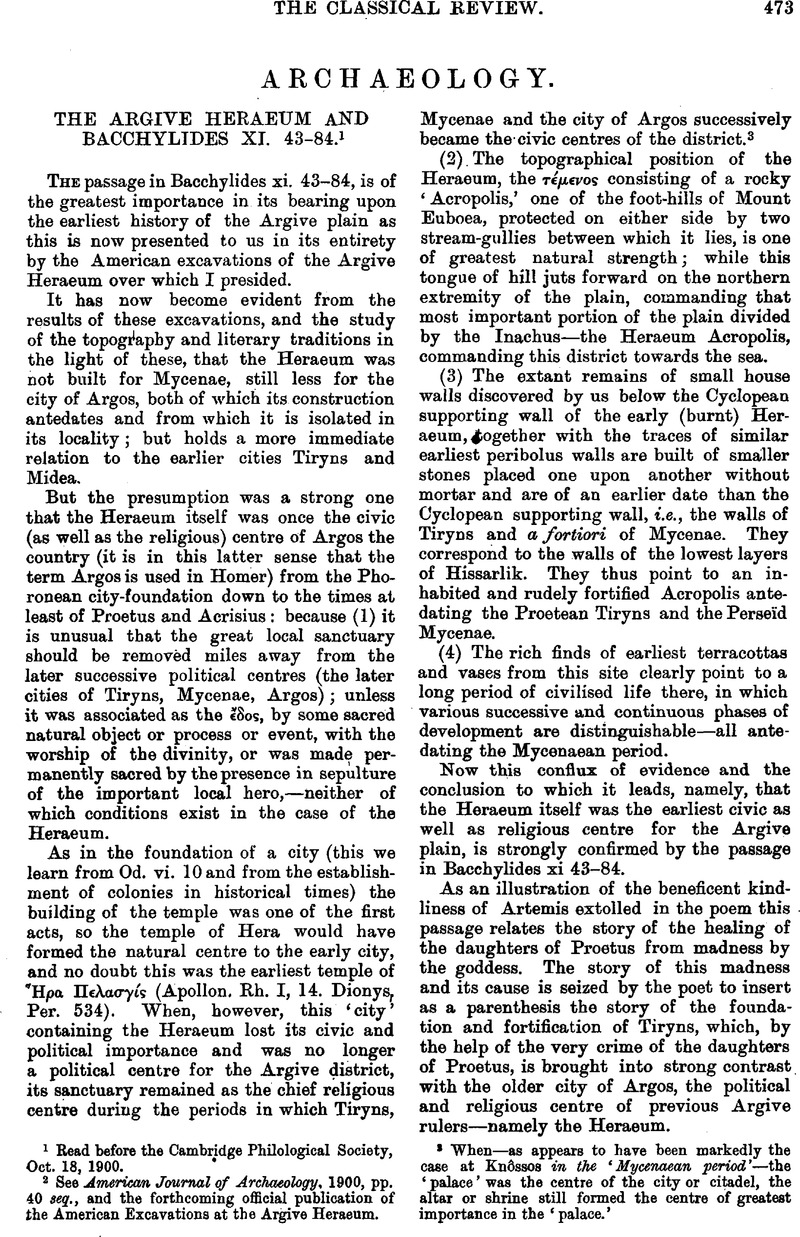No CrossRef data available.
Article contents
Archaeology
Published online by Cambridge University Press: 27 October 2009
Abstract

- Type
- Other
- Information
- Copyright
- Copyright © The Classical Association 1900
References
page 473 note 1 Read before the Cambridge Philological Society, Oct. 18, 1900.
page 473 note 2 See American Journal of Archaeology, 1900, pp. 40 seq., and the forthcoming official publication the American Excavations at the Argive Heraeum.
page 473 note 3 When—as appears to have been markedly the case at Knôssos in the ‘Mycenaean period’—the ‘palace’ was the centre of the city or citadel, the altar or shrine still formed the centre of greatest importance in the ‘palace.’
page 474 note 1 I do not think that the attribute θεοφιγ⋯ς would be the usual term applied to the city unless it contained the sanctuary.
page 474 note 1 This description applies also, beyond all question, to one of the two fragments bearing the name of Themistocles and dating from 347 B.C. (Annali dell' Instituto, 1877, p. 310; Bulletin de correspondance Journal international d'archélogie numismatique (Athens). Vol. III. Part I. 1900. hellénique, I. PI. X. 1, and p. 215), where De Witte and Martha saw in the narrow border line the edge of Athena's robe! Nor does it seem possible explain otherwise the second fragment of the year, published together with the first, although the border seems here to consist of two lines, and these unusually broad.
page 475 note 2 See Heermnance, T. W., in the American Journal of Archaeology, xi, p. 332Google Scholar. This article gives a convenient summary of the epigraphical facts pertaining to the fifteen dated Panathenaic amphorae or fragments of amphorae hitherto published.
page 475 note 3 Hauser has in fact implied this view (Neu-attisehen Beliefs, p. 160), though on less decisive grounds than are now before us.
page 475 note 4 See Heermance, op. eit., p. 333.


